Namibia Self Drive Safari – Driving Tips, Road Conditions + Safety
Can I do a Namibia Self Drive Safari? (Yes You Can!)
A Namibia self drive safari is one of those things that sounds kinda tricky and maybe a little unsafe. But don’t go putting it in the too hard basket just yet. Self driving in Namibia is surprisingly easy, and as safe as many western countries.
In fact, Namibia is an ideal destination to self drive, and most people who travel to Namibia are on self drive tours. Check out my detailed post on five Namibia self drive safari itineraries for ideas on where your wheels could take you. Freedom!
If you’re unsure whether a self drive Namibia tour is for you, see if you pass this simple two-part test. (1) You have a driving license (no need for an international license). (2) You are comfortable driving on well-maintained gravel roads. If the answers are yes, then I’m happy to report that you’re perfectly qualified to do a self drive Namibia trip!
(Disclaimer: I did not in fact drive anywhere in Namibia. I have never even owned a car. My husband is a far superior driver. I took on the role of somewhat sub-par co-driver.)
What Are The Namibia Roads Like?
Most roads in Namibia are long, flat and wide, with very little traffic. Some of the roads are tarred (i.e. sealed), including the road from Windhoek to Etosha National Park, but most of the roads are unsealed gravel, including the roads inside Etosha.
The gravel ranges from the coarse and bumpy type in the photo below (definitely not as bump as a New Zealand rural gravel road!) to smooth hard sand roads. The roads are generally in good condition and well-maintained, and graders are regularly out flattening the gravel roads.
This all makes for fairly easy driving conditions in Namibia. That said, it’s probably not the time to try out your crazy rally driving skills. As with all roads, stick to a sensible driving distance, and keep a careful eye out for potholes, water crossings, unexpected dips and wild animals. We encountered all of these on our Namibia self drive road trip!
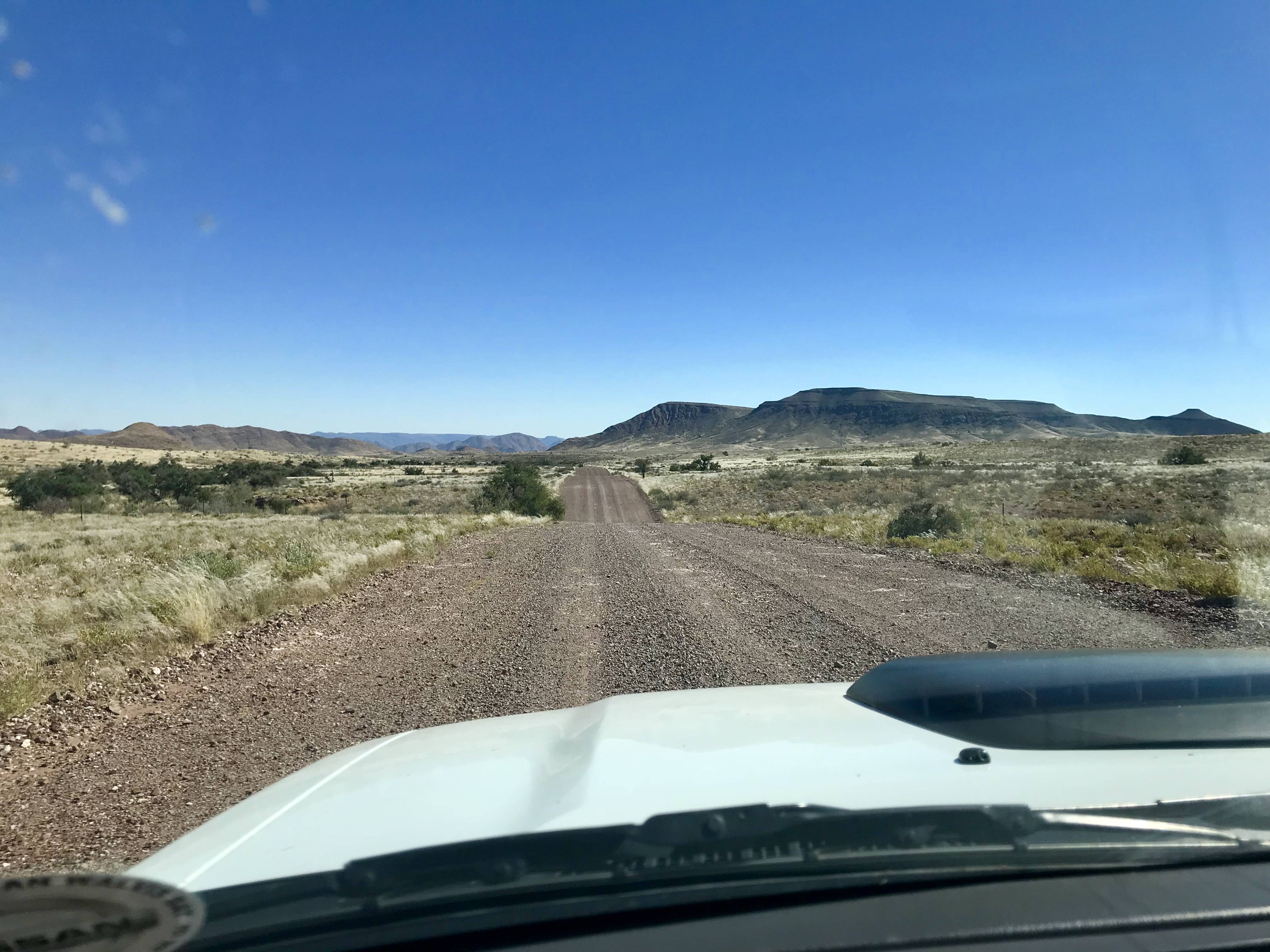
What Kind Of Vehicle Should I Hire for a Namibia Self Drive Safari?
Locals seem to comfortably navigate the gravel roads at speed in any kind of vehicle. However, we preferred to hire a four wheel drive (4WD) or 4×4 vehicle for our Namibia self driving safari. This provided better grip when driving on loose or wet surfaces and meant we could drive safely at higher speeds.
We did see many tourists in regular two wheel drives (2WD) (including as we were overtaking them!). A regular vehicle could be a good option if you’re on a budget, visiting in the dry season and drive safely.
Most hire cars come with spare tyres and a cool box and optional GPS. If you’re organizing your trip through a travel agent, they’ll often provide a local mobile phone pre-programed with helpful phone numbers, including for the lodge and local agents.
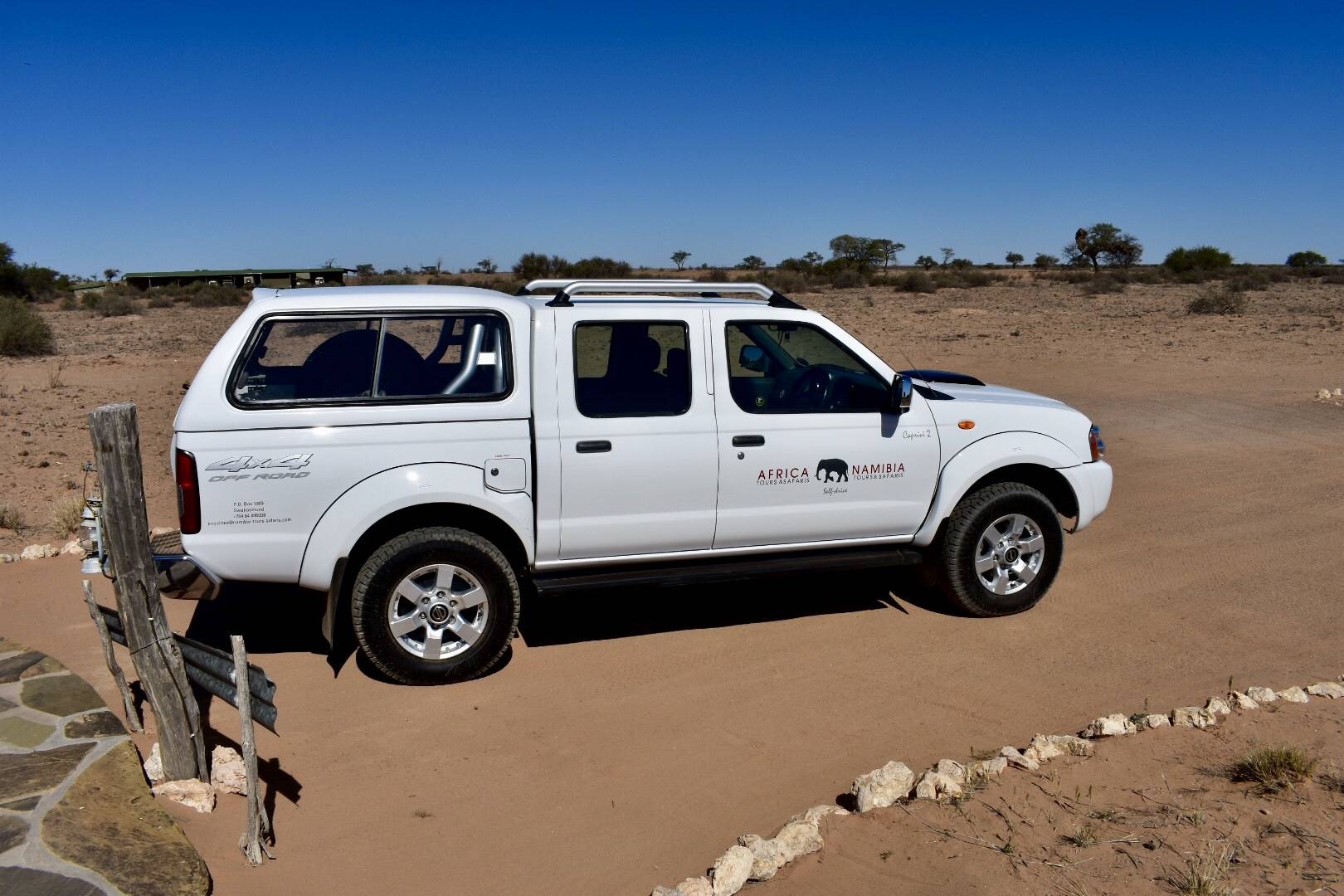
Is it Safe to Self Drive in Namibia?
Namibia is generally regarded as a safe country to travel and self drive in, provided you take the usual precautions. In fact, I’d say that the roads are just as safe as Europe and the US, if not safer due to the lack of traffic.
In terms of security, make sure you keep the windows up and doors locked while you’re in towns and at petrol stations, and take care around Windhoek. Outside these areas, there’s very few people on the roads in Namibia.
In terms of driving, keep under the speed limit and at a speed you’re comfortable with, especially if you’re new to gravel. The gravel can create large dust clouds, so keep a sensible distance from other vehicles. As mentioned above, watch out for hazards on the road like potholes and wild animals.
Flat tyres are relatively common, and you should always travel with a spare tyre in Namibia. Hopefully you can change a tyre (it’s not that hard, I promise!) but, if not, make sure you have the phone number for a roadside assistance service. Plus if you’re on one of the usual self-drive routes, it shouldn’t be too long before someone passes you who can help!
Is Namibia Self Driving in Easy To Navigate?
Thankfully technology has made road navigation very easy, and Namibia is no exception. Most vehicles are equipped with GPS. Our GPS was reliable other than for one lodge that it couldn’t locate. (We probably should have checked the route before leaving!)
We also found Google Maps to be pretty reliable for driving routes. (Disclaimer: This still didn’t stop me from giving one or two dodgy directions in my ‘co-driver’ capacity … quickly solved by another look at the GPS!)
Mobile internet access and Wi-Fi is spotty in Namibia. Make sure you download the offline version of Google Maps before you hit the road.
How Long Does a Self Drive Namibia Trip Take?
In our experience, Google Maps and GPS were pretty reliable for estimated driving times. That said, we had a 4×4, good dry driving conditions and a driver experienced in driving on gravel roads. Others find that Google Maps is optimistic. In planning, you should build some fat in with Google Maps driving times to account for contingencies and make sure you can keep a safe driving speed at all times.
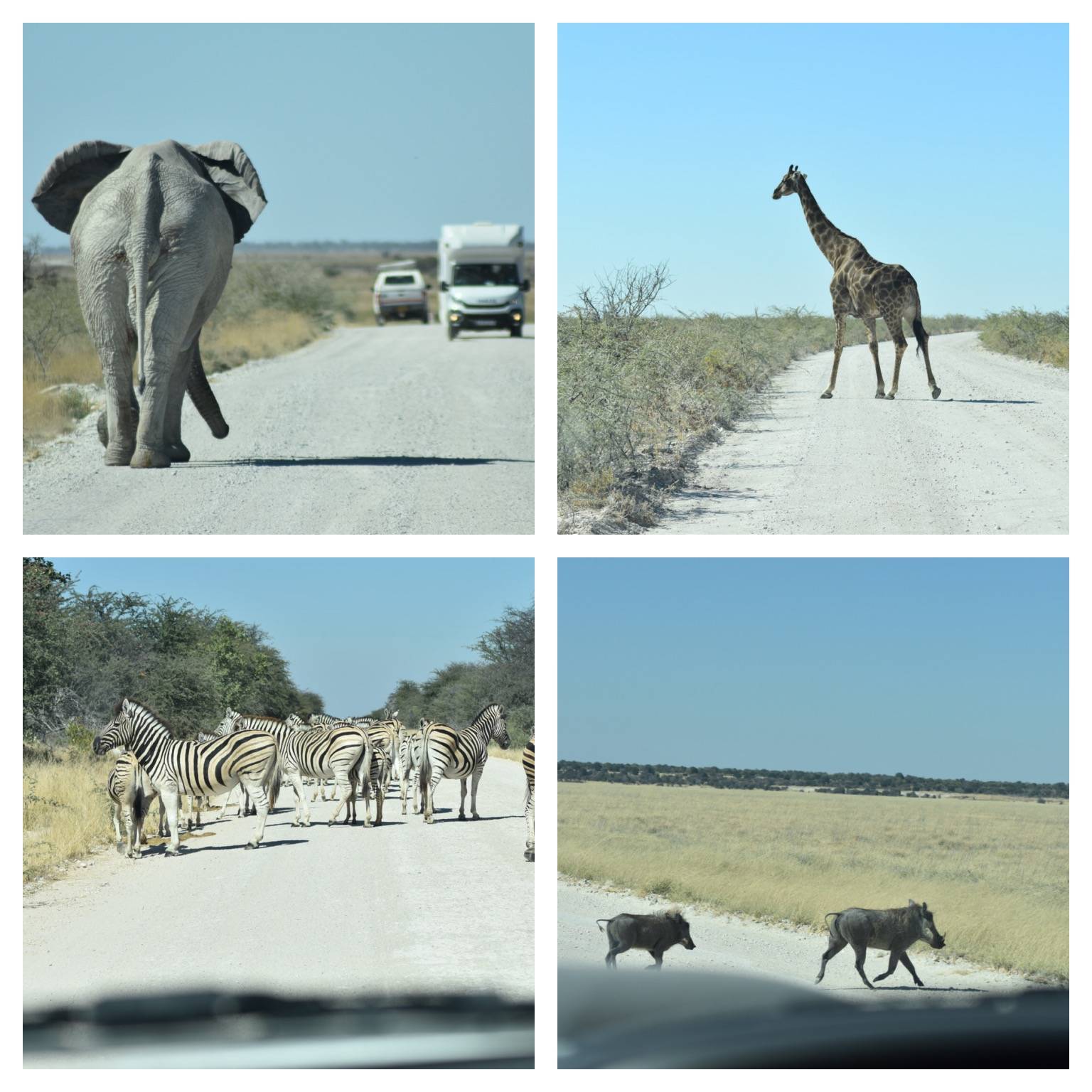
You should also build in contingency time for hazards of the road in Etosha National Park! We waited 30 minutes for this bull elephant to make his merry way on.
The speed limit is generally 120km/h on open tarred roads, 80km/h on gravel roads and 60km/h in towns, cities and inside Etosha National Park. The condition of gravel roads (and accordingly the safe speed limit) varies. If you are not experienced on gravel roads, an average speed of 60km/h should be adequate when planning your itinerary.
If you’re the planning type, you can easily map out your routes and driving times before you even leave home! You can then double check this with each lodge or campsite as you go. If you’re more a fly-boy-the-seat-of-your-pants type, we also found it easy enough to get a rough idea of driving distances when planning our itinerary and then decide driving routes on the ground.
We did a fairly classic first time Namibia self drive route. Our driving time between lodges was 2 to 6 hours, with stops and diversions. In Etosha, we also spent many hours each day driving around in search of animals! (Or waiting for animals to clear the road. Us hoomans certainly don’t have the right of way in Etosha!)
Check out The AF’s Namibia Itineraries page for our Namibia self drive route, distances and times.
What Else Do I Need To Know About Self Driving in Namibia?
Tip 1: Petrol stations can be sparse between towns and on occasion run out of gas. Top up on gas whenever you see a petrol station and your tank is below full. There are petrol stations at the main camps inside Etosha. Most gas stations we visited accepted credit cards, but carry enough cash just in case you get caught out. It is customary to tip petrol station attendants around N$5, so carry small change.
Tip 2: Carry plenty of water and some snacks in your vehicle to keep hydrated and stave off starvation if you happen to break down. (Maybe a book or game to stave off boredom too!) We also encountered a few locals in remote locations in need of food and water. It was great to have some spare 5L water bottles and bags of nuts to share.
Other than that, well, there’s not much really else that you need to know … Not only is it easy and safe to self drive in Namibia, but it also gives you the freedom to explore at your own pace and certainly has a sense of adventure to it.
Read More: Discover the most incredible Namibia destinations for your Namibia self drive safari adventure!
Like it? Pin it!
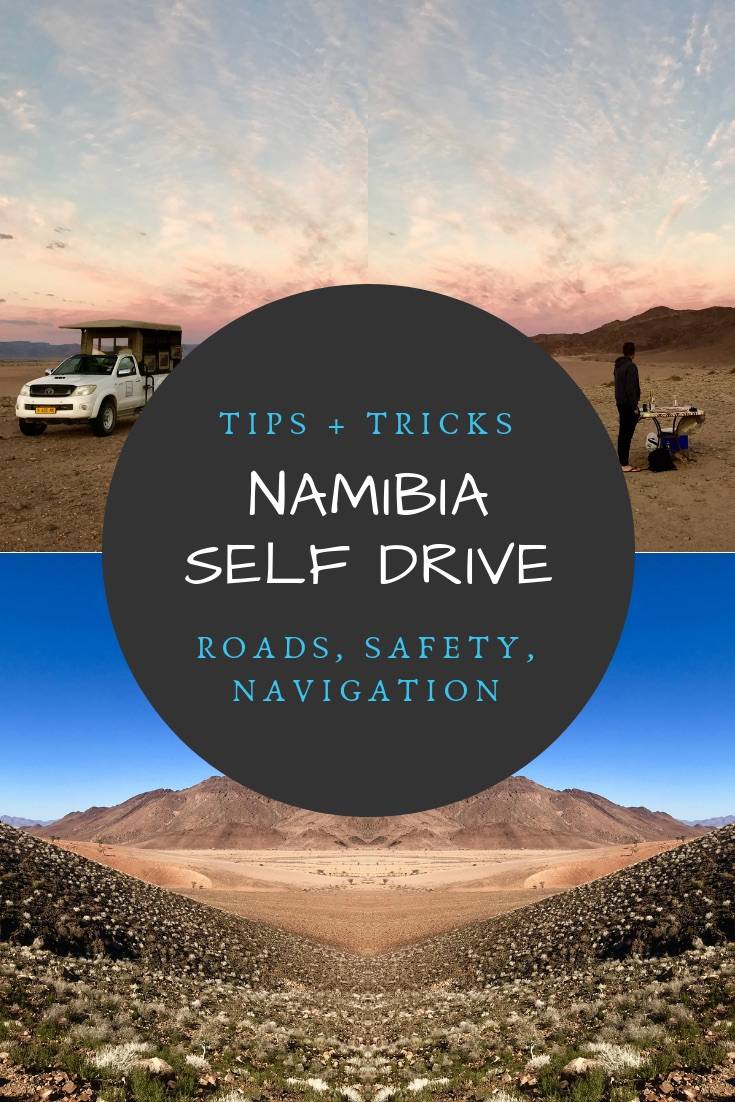
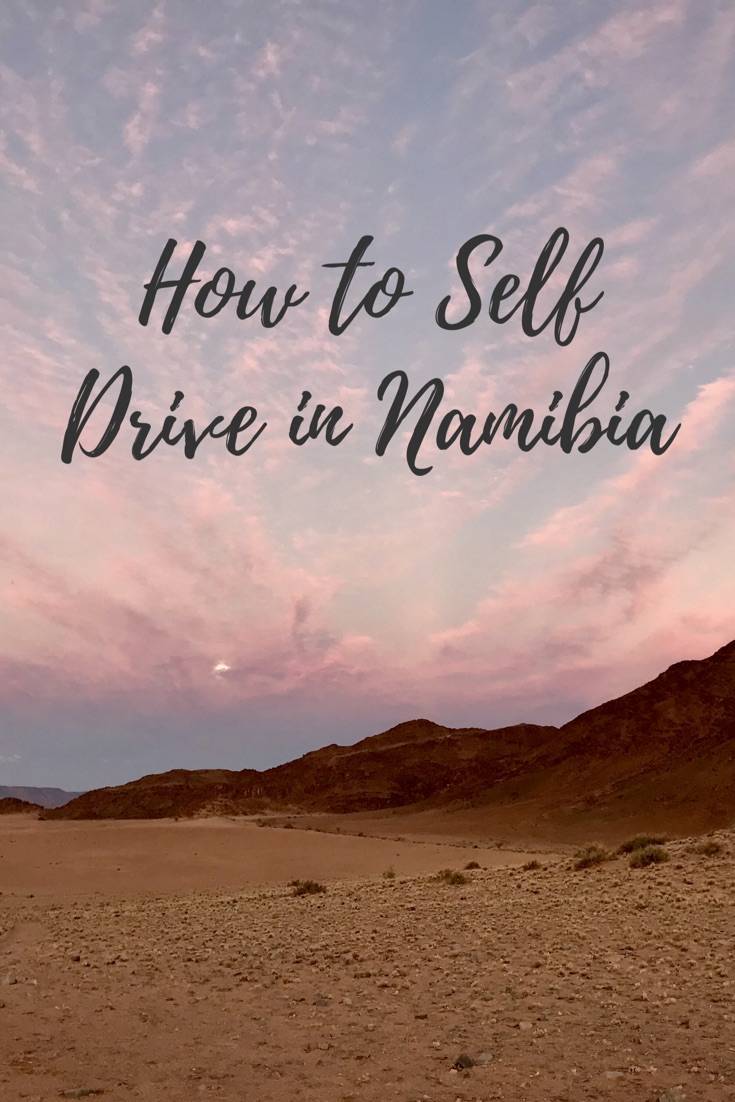
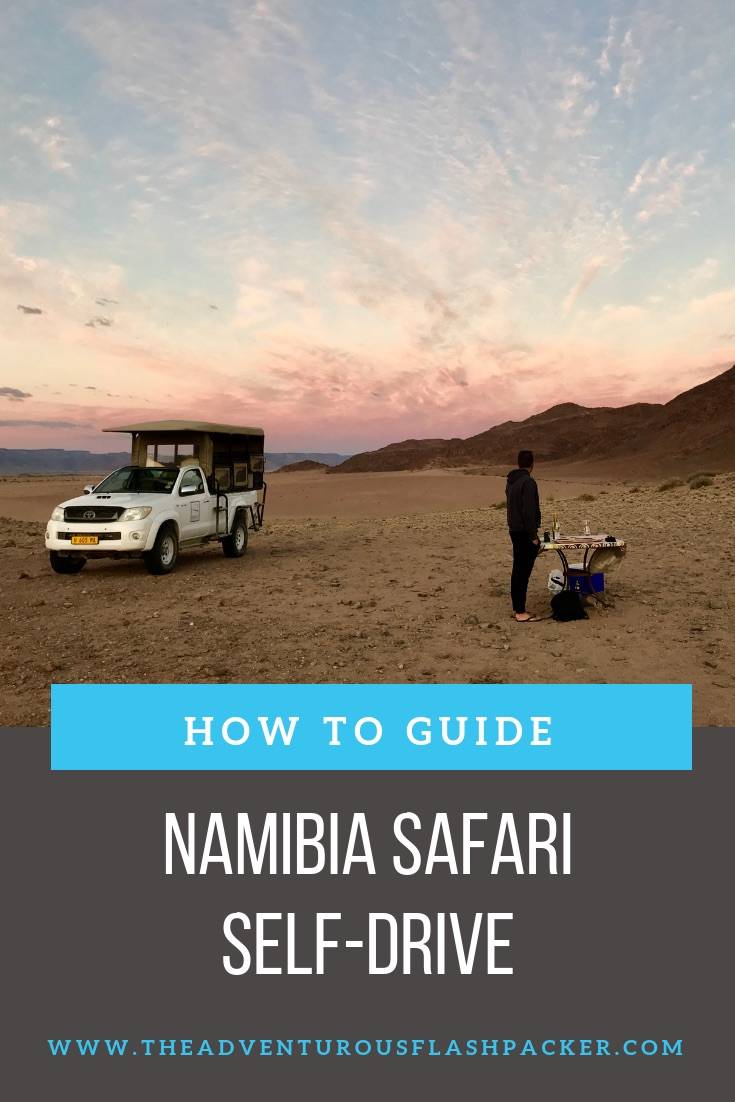
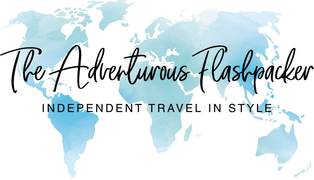
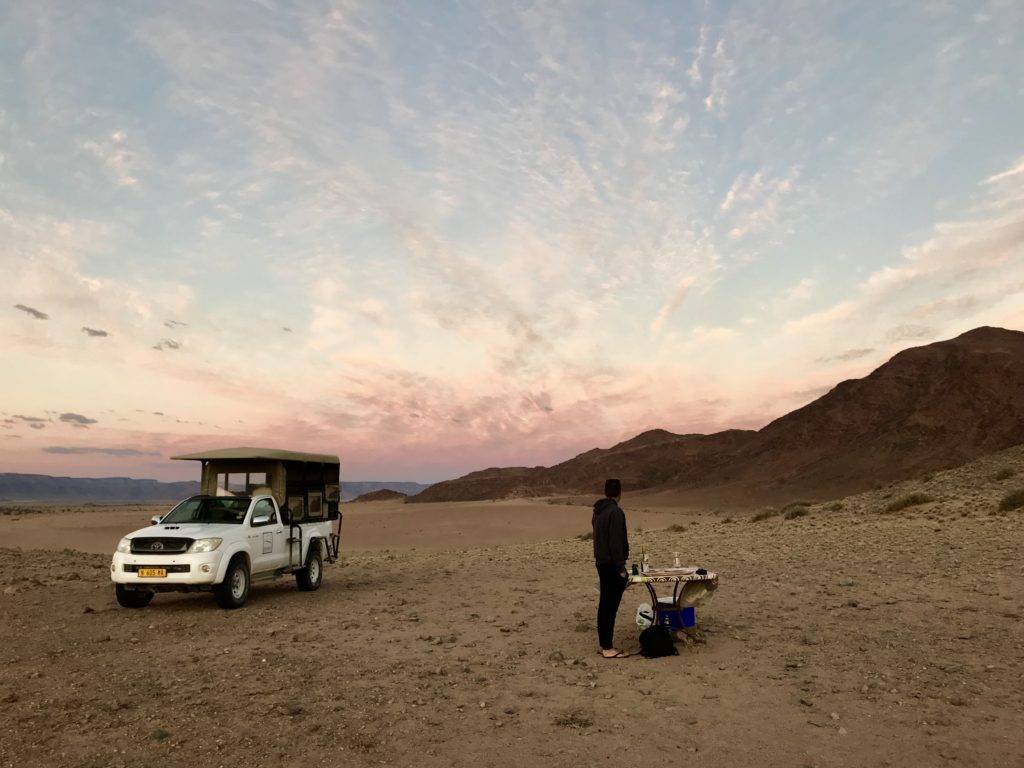
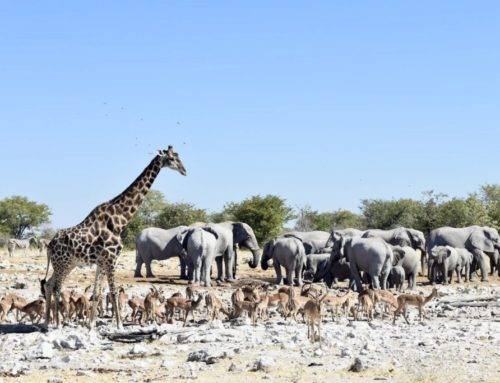
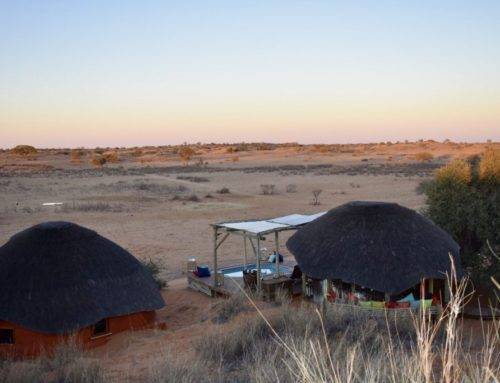
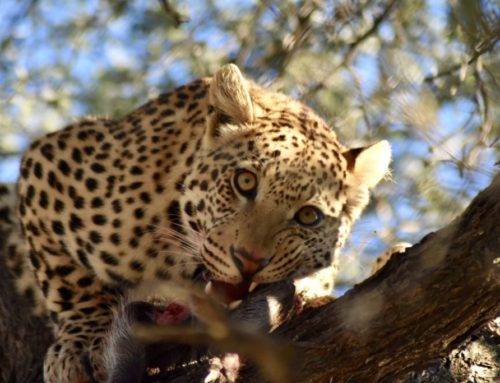
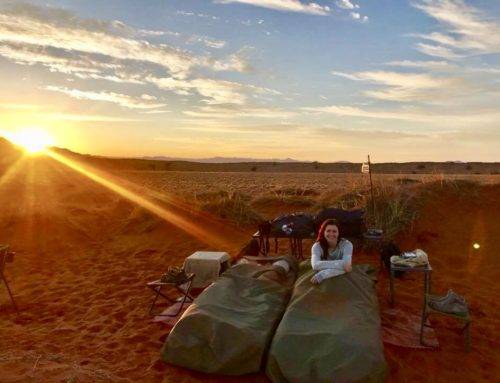
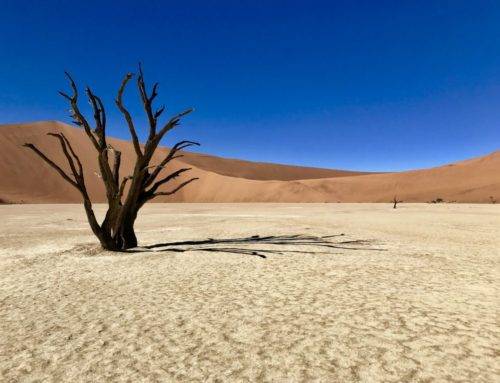
Am a Tourism Student and this really comes in handy to add to my knowledge.
Thank you
Great article and stunning photos! We LOVE Namibia and reading your post has us wanting to go back. What an incredible place for a self-drive safari – we think the country is totally underrated. Cheers 🙂